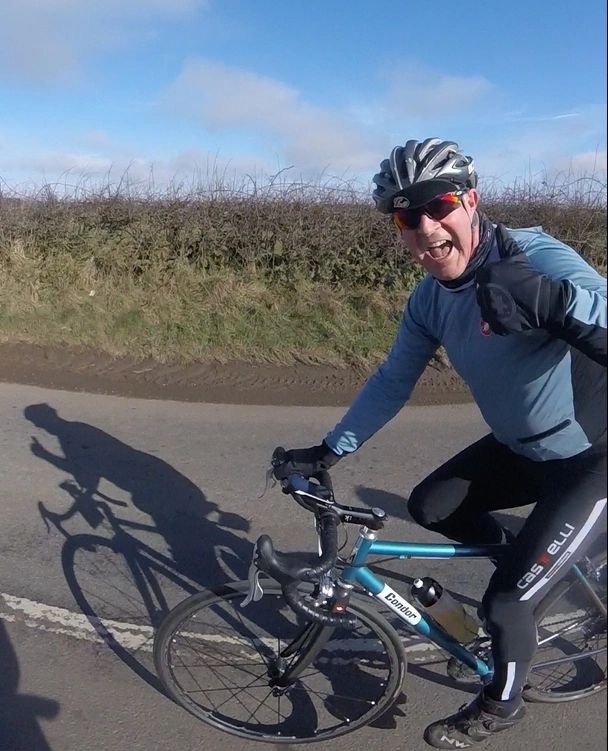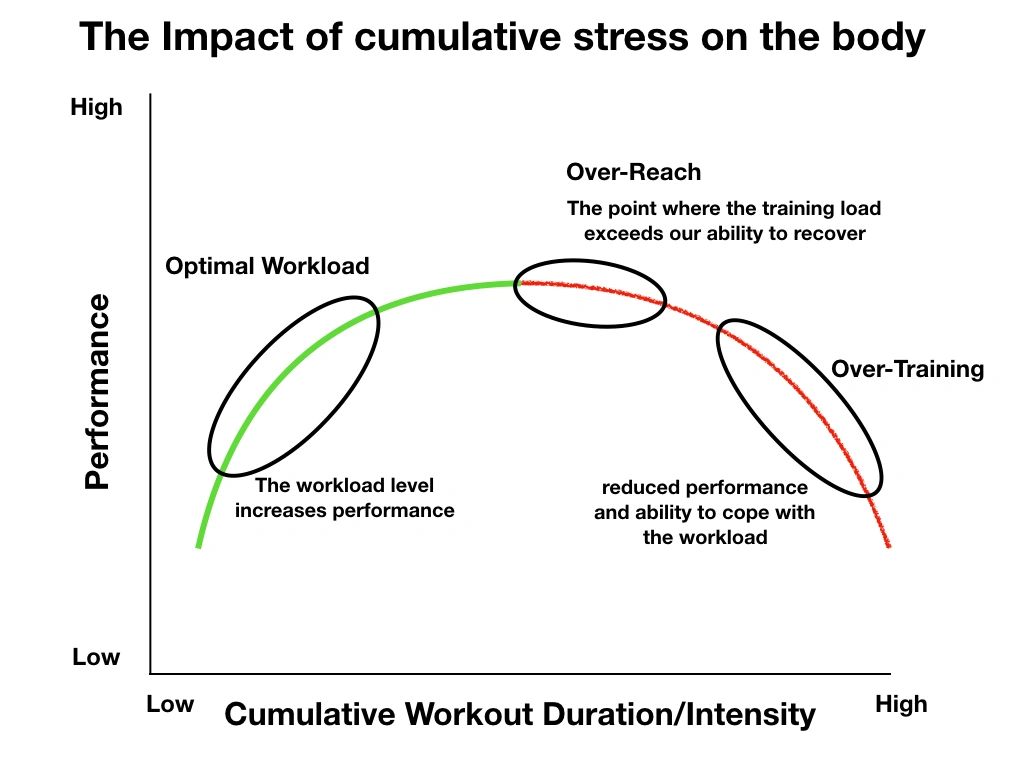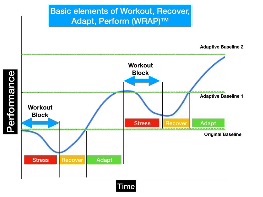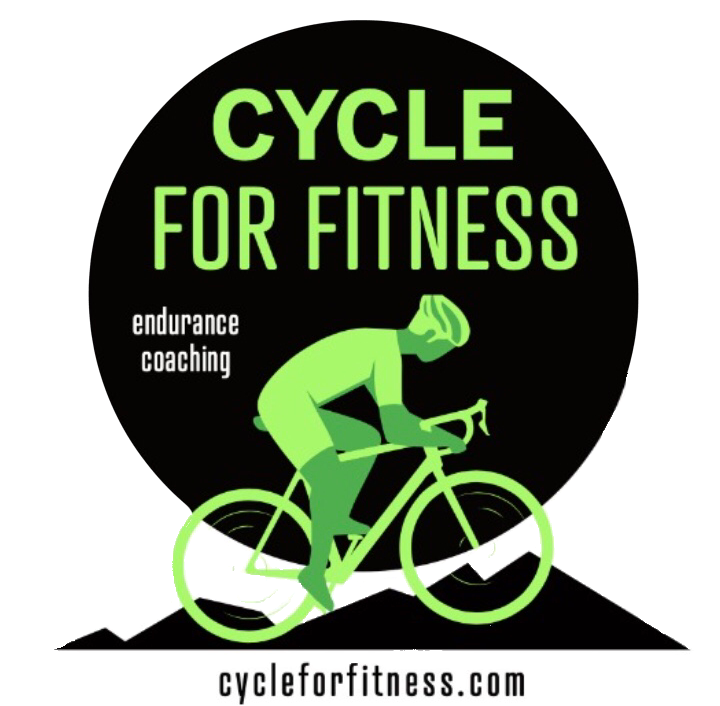
If you are reading this then I am hopefully making the assumption correctly that you have some degree of interest in improving your fitness, perhaps shed a few pounds in weight, would like a little more wellbeing in your life...and that you have at least some curiosity towards cycling (or cyclists).
If you have yet to read anything about Cycle For Fitness, we are all about helping people who would like to start or maintain a journey towards a better them. Why do I say journey ? Because it is based on the premise that where you end up will be different from where you started. That you are not interested in quick fix diets (possibly tried that before) or interested in trendy or short-lived faddish workout routines. This is about you, your personal goals, your personal ambitions, your determination, your achievements in making sustainable lifestyle changes.
We are talking about those that make you feel more alive, sleep better, recapture the ability to do things you once did when you were younger. It’s about reducing your risks of heart disease, cancers and other forms of age-related and obesity related illnesses.
Our role is simply to be your facilitator, your coach, your guide along the journey, and our tool is the humble bicycle, fresh air and feelings of freedom.
So where are you on this journey ? I like to think there are a couple of places, there may be more, but here’s few starting points
Stage 1: I hadn’t really thought about it until now.
You possibly read and clicked through one of our sponsored links, or we came up on a Google search, or perhaps someone you know directed you to our Facebook page and website. You might be thinking “I am not sure what this is all about, and anyhow I thought that using a coach was a bit you know, intense, just for the fit ones, or the ones who can afford a personal trainer”. Or you may be thinking “It all seems expensive and time-consuming, who can afford the time to go cycling, and anyway aren’t the road a bit, err, busy and dangerous ?”
Well these are not uncommon thoughts and preconceptions. We don’t charge membership fees, it’s pay as you go, and as a coach, none of that “you must do” type of stuff....this has to be sustainable, so it’s at your pace. I’ll talk more about why we are different and my passion to help people through cycling further below.
But is it safe ? If we look at the statistics produced by the Bicycle Helment Research Foundation (see note 1) , it show the risks of cycling relative to other activities. based on the number of casualties in the UK, for every cyclist fatality, there are 7 swimmers, 29 horse riders, 4.2 tennis players, and where there were 138 cyclists killed on UK roads, this compares with 3,000 other road users, and 157,000 heart desease. The University of Glasgow report (see note 2) concluded that cycling to work can cut your chances of premature death by 40%. Now there will always be idiots on the roads, cars and bikes, but by understanding how to ride with confidence and with caution can reduce the risk of injury to yourself and others. As a qualified British Cycling coach, your safety is my highest priority.
If you need a little more time to understand if cycling could be the answer to your quest for fitness and mental wellbeing, or you see for the first time the possibilities that you might actually enjoy the freedom that only road cycling offers, I recommend reading through a few of our testimonials, and then perhaps people’s experiences on the health and wellbeing benefits of cycling. If you do, and want to take the first step on your journey, come back and talk to me at no obligation.
Stage 2: I would like to do something, but there are too many options, I don’t know where to start.
You have reached a point of greater self awareness, you know you can be a better you, but too many options create confusion and possible paralysis in terms of making a commitment to act.
If you are at this stage, you need a no-nonsense, simple plan with as much hand-holding as you can get.
As you’ll read below, I was at this stage, but once I decided that cycling was for me (knee problems prevented me running), I started slowly, relearning how to ride a bike, first just a few miles, but by building confidence slowly it quickly became enjoyable, the sun on your face, the wind at your back, able to notice the beauty of the land and the sight of wildlife set my soul alight, I would return from rides with a grin from ear to ear. Sorry, got carried away there :-)
I have not forgotten those first few steps, those first couple of months where things began to click into place, and so have made sure that our plans emulate this with slow progresssive steps, I want you to feel the same energy and passion. That why it is called the Grin Factor !
Stage 3: I have tried and failed with other forms of exercise and personal trainers, what’s so new here ?
Okay, so I was approaching 90Kg back in 2011, the doctor had prescribed medication for a pre-diabetic state, my Adrenalin and Cortosene levels were off the scale due to stress, unhealthy lifestyle and generally being overweight. One doctor even was taking me down the pathway towards brain surgery as he thought I had cancer of the pituitary gland. Things had to change ! I bought a bike and ignored the few months of ridicule as the “fat bloke on a bike”, I started slowly, 20 mins, 40 mins, 10 miles, 15 miles.....building slowly and gradually. My weight came down swiftly, my feeling of self-esteem rose, I rode further and faster to the point where I though I could take on a few challenges. First was London to Paris, then a big one, I entered a 500Km ride around Mallorca in 3 days with Stephen Roche (he’s a ex-pro who won the Tour de France, World Title, that kind of thing). My wife looked at me and decided if this wasn’t going to be a disaster that I needed a coach. Enter Tom Kirk, a professional team (Morvelo Basso) cycling coach with a PhD in Sports Physiology and Nutrition. Using Tom’s scientific approach my fitness shot up, I lost more weight, and well really enjoyed Mallorca. I was so taken with Tom’s easy to follow and simple programmes that when I decided to do something similar, but for those just at the beginning of their fitness journey, I enlisted Tom’s help and asked him to be our technical adviser.
Getting to the point, Cycle For Fitness is therefore a combination of Tom’s scientific based programmes and my own personal experiences and training as a certified British Cycling coach. Together we make it personal, with the plans centred on you, irrespective of your starting point, with workouts that are designed such that you can do them at your convenience and pace of improvement. I can’t be everywhere so we use a little technology to make this an online experience, also called eCoaching, however not forgetting how important it is to speak to someone about a problem, how you are progressing and have someone to be there and encourage you, our plans use the good old telephone, yes we speak once a week....or as and when you need to speak to me.
When we speak we can talk through common issues such as safety, equipment, what to wear, how to prepare for longer rides, advice on the type of bike itself, etc. I will also use a little bit of technology to find suitable cycling routes locally to you that avoid busy roads (and steep hills, unless you want to challenge them).
In all, this means you get the benefits of a personal coach that is always available and one that can empathise with exactly what you are going through. I hope that makes more sense now that when we say we are different, if not unique, you can see why.
Stage 4: I already cycle but really want to be a little more confident, go a little faster without collapsing in a heap afterwards
No problem, plans include structured workouts that build fitness based on your current fitness levels, using either rate of perceived effort (RPE) or using your threshold heart rate and heart rate zones.
We include the TrainingPeaks App basic account for you to follow and capture your weekly progress. Each workout is designed to either build stamina, develop strength or lose weight (or combination of these), and by using RPE or heart rate zones we ensure that you neither undertrained nor overtrain, or reach levels of fatigue that might cause you to become unwell through overexertion or injure yourself.
This means that you exercise in your sweetspot as much as possible.
If you are nervous on roads, we can arrange an accompanied ride to help you develop your road craft, the cost of this is dependent upon whether we come to you, or you come to us either here in Oxfordshire (OX49) or Cornwall (TR27).
Perhaps you find yourself wanting to do a charity ride or one of the many organised rides that occur each week, then we can set these as specific goals and plan accordingly to accelerate your fitness.
Therefore we concentrate on making sure that every workout is done with a purpose, whether that is to burn fat, to increase your aerobic fitness or reduce weakness that you may have in your cycling technique.
Stage 5: I get it, how much, what do I need, and when do we start !
That’s cool. So first we need to talk about your current fitness levels, your goals, ambitions, commitments, etc to decide what plan is right for you....unless you already know !
What you need is a roadworthy bike, helmet, basic cycling attire, and determination. If you have a heart rate monitor then so much the better, though not essential during the early stages.
What else ? The willingness to commit 2 x 1 hour sessions midweek and a few hours at weekends, plus you value your health enough to invest £2 a day towards your journey to fitness for two months for the first programme.
You can place an order using our secure shop, either debit card, Paypal or Apple Pay. We will then set up your account, get you onboarded, then we’ve off !
Stage nah: I’m really not that interested, just browsing
That’s okay, it’s better to decide not to do something than go into it half hearted. That’s a positive decision.
Notes
1. Bicycle Helmet Research Foundation, Relative Risk in Cycling http://www.cyclehelmets.org/1026.html
2. University of Glasgow Report : CYCLING TO WORK MAY CUT YOUR RISK OF PREMATURE DEATH BY 40% https://www.gla.ac.uk/news/headline_522765_en.html

Well first of all, let’s dispel the myth that to cycle you need to be one of those lycra-clad weekend road warriors.
Just a few years ago I would have fainted or broken into a cold sweat at the thought of getting on a bike and pedalling on the UK’s roads....and allegedly for fun ! But as a “middle of our years” type of person, taking up cycling has been more than just a means to roll back the years, it’s been a life changing experience, reversing the descent into type-2 diabetes and ill health, giving me a new perspective and lease on life.
Even during times when motivation is low, or when it seems a bit cold or wet outside, within a few pedal strokes the sheer joy and sense of freedom reminds me of why I took up cycling as my journey to fitness and wellbeing.
Looking back, when the opportunity for a career change arose, I created Cycle For Fitness, took my certification as a British Cycling coach and working with Dr Tom Kirk created programmes that are designed for people who would otherwise feel intimidated by the thought of cycling. People who would think it is too late in the day to take up a new hobby or they feel they are too unfit to start make a positive change. However, from my own testimony, it is never too late.
If this resonates with you, if you would like to regain the kind fitness you naturally had in your twenties and thirties, if you enjoy the feelings wellbeing, pick up the phone, message me, email me or request a callback on our contacts form.
We are here for you, the first step in any journey is the hardest, take a deep breath, contact me for a free, no obligation chat.
grant@cycleforfitness.com
A recurring theme that I hear from clients, friends and other cyclists is an obsession about what speed they should be going and how they can get faster.
 Now don’t get me wrong,if you are wishing to be a competitive cyclist, or ride with a club then sure I get it, you need to train to improve your performance, ie to be faster.
Now don’t get me wrong,if you are wishing to be a competitive cyclist, or ride with a club then sure I get it, you need to train to improve your performance, ie to be faster.
But for mere mortals, i.e. those of us that might like to join our buddies on a mid-week ride or Sunday “ride to the cafe” jaunt, or we ride purely with an intent to improve our fitness and wellbeing, by concentrating on speed without understanding the need for the accompanying bike handling skill is tempting fate.
At some point when you least expect it, without good technique, it is highly likely that your confidence in your abilities will exceed your actual competence to handle the situation, with the usual predictable outcomes of costly damage and/or painful injury.
So what type of bike handling skills do we need to master to get the most enjoyment out of riding, keep the rubber on the road, and strangely enough will increase your overall speed. The following is a list of common skills required, and is not meant to be exhaustive:
- Braking: use of the brakes in a progressive manner, knowing when and when not to use your brakes, the differences between the front and back brake and how affect your balance; what do do to prevent and recover from your wheels skidding, at preventing the front wheel “washing away”.
- Cornering : how to safely and optimally approach a corner, using the apex to find the best line through the corner and how to exit the corner such that you are ready for next corners or obstacles. Doing this right will give you significant speed advantages.
- Descending: how to safely descend hills, staying under control to maintain smooth bike handling
- Riding in a Group: riding safely with two or more riders, positioning and drafting
- Pedals; how to smooth out the pedal stroke thereby avoiding “stamping” and strains, plus correct feet positioning and use of cleats, thereby getting more speed for your efforts
- Use of Gears: use of the appropriate gears to maintain smooth progression
- Use of hand signals : notifying other road users of your intentions and warning other riders of obstacles, rough road surfaces, changing your riding line, slowing down and stopping
- Riding Slow: maintaining control and balance of the bike when needing to undertake slow speed manoeuvres
- Riding in Traffic: understanding how to ride safely in traffic, being assertive and controlling your space, maintaining awareness of potential hazards and how to avoid potential issues with other road users (pedestrians,cars, horses, etc).
- Eating/Drinking while riding: how to ride while taking one or both hands off the bars to take a drink from your water bottles or snacks from your jersey pockets. It’s no good being a speed king if you have to stop every time for a slurp of water :-)
How do you learn to master these skills ?
- Recently the UK Government rebranded the cycling proficiency test (if you can recall them from your thought) into Bikeability training plans that cover the very basics of handling a bike (in a playground) to more complex road awareness training. However it is basic.
- If you are looking for something more advanced, the most common route is to join a club and get instruction from the more senior members, but...
- If you are not ready or willing to join a club then there are a lot of videos on sites such as YouTube from organisations such as GCN that will give you the basics but that can only help so far.
- Other means are to sign up to a cycling “bootcamp”...there are plenty in Spain and Mallorca for instance, however from my experience these are primarily targeting the club and competitive rider....if you can’t keep up then you are assigned to a “social group” which maybe highly enjoyable, but is not there to teach you technique.
- The best therefore is to work with a cycling coach. There are a couple of options:
- The first is a fitness coach. This type of coach usually offers online coaching which requires you to sign up a programme; you may or may not actually ever meet the coach as the focus is on structured workouts and post activity advice to ensure your fitness increases without you suffering high levels of fatigue, or preparing you for a particular cycling event.
- The second type of coach is more of a conventional instructor, i.e. observes your techniques and provide guidance on how to improve your bike skills and eliminate bad habits. This can be either individually or as a group. British Cycling base their coaching model on this type of instruction, going from basic techniques that you would learn in a safe, off-road environment (for example a school playground) to specific techniques for road, MTB, track, downhill, etc to the elite programmes aimed to get talent onto Olympic podiums.
- A much newer type is the hybrid coach. This type focuses on fitness, but also offers individual or group rides to help improve technique. This is the model offered by Cycle For Fitness, ie primarily fitness focused, but also providing advice on our blogs, and options for accompanied rides to help with the techniques that will make you safer and improve basic bike handling skills.
With any of these options, make sure that the person coaching you is accredited to a national organisation such as British Cycling and has public liability insurance.
If you’d like to talk these options through with us, please get in contact, or just reply to this post.
Segura ciclista!
Grant
When is weather fickle ?
 Or should the question be, are we really prepared, mentally and physically, for what mother nature has to throw at us, sometimes several shades of “climate” in one ride.
Or should the question be, are we really prepared, mentally and physically, for what mother nature has to throw at us, sometimes several shades of “climate” in one ride.
I have previously talked about the need for correct preparation of your bike and use of layers to keep you warm and dry on your rides, especially as we move from Autumn to Winter riding conditions, but this weekend reminded me that we also need to prepare our psyche.
Sunday morning, October 21st, 7:30am, after a quick cup of tea to bring me around, I looked forward to the promise of a few hours on the bike enjoying the beautiful colours that erupt during Autumn, especially here in Cornwall, with the bracken high on the coastal hills shimmering golds and reds in the low sunshine. Glorious.
I had checked the weather reports the previous evening, light to zero wind, temperatures climbing to a balmy 15 degrees, light clouds and sunhine….based on that my mind shifted to which bibs to wear, which gloves and shoes needed, should I put on overshoes, a gilet or long sleeve jacket….making choices of what to wear is part of the pre-ride ritual for me; get it right and you get an immediate reward as you push off, toes and fingers warm, you are a little cool, but you know that this is temporary and you will be up to temperature in a few minutes simply through your own exhertions as you warm up for the first 5 to 10 minutes.
But getting it wrong can be dire. The first few minutes you are painfully cold, and although you warm up, the extremities remain bloody cold, it isn’t a great experience !
So, back to fickle weather. I open the curtains to see, well nothing much other than a wall of sea mist that rolled in overnight like an ice blanket. Don’t get me wrong, there is something surreal when riding in mist (with strong lights and a high viz jacket), one of my fondest memories is riding across the Scottish highlands near Altnaherra with a low mist embracing the moorland and giving the appearance of rivers running uphill, but this was not the weather I had been expecting.
For a brief moment I thought “sod it”, that’s the ride buggered, but remembering that this is after all Autumn, and so we should expect changeable conditions, my evening preparation only needed to be slightly tweaked to include warmer gloves, a cycling cap and a change to full legged bibs, and I was ready.
How did it go? The first few minutes at 4 degrees was a little cool, but as I climbed out of the valley the mists disappearing behind me, sunshine greeted my cheeks, the road became smooth, the crystal clear air filling my lungs. You can hear every breath on still days such as this, the bike hums and the sounds of gulls soaring high above add layers to the emotion.
I stop at St.Ives, no longer swamped with tourist, but a tranquil haven, the bay stretched out ahead of me. In the distance, home, shrouded in mist like a welcoming embrace. A few more hills and then the descent into the harbour.
Days like this are to be cherished.

Fickly weather ? Bring it on, cycling in Autumn brings its own beauty and surprises, joy jumping in our hearts, our souls stirring with the graciousness of mother nature.
Keep riding, fitness and personal wellbeing beckons those who do.
It’s a WRAP !
Once we sign up to the idea of training or any form of exercise, at the outset we are full of motivation and “gung-ho!”, keen to do our workouts with as much vigour as possible, only to quickly feel the soreness and tightening of muscles, the aches and pains of over-exertion.
As we continue down this path, we begin to lose our mojo, with general feelings of exhaustion setting in. If left unchecked we begin to pick up injuries such as pulled muscles and strained ligaments, feelings of desperation, anxiety and inadequacy.
All the work we have put in quickly dissipates and we begin wonder if this is worthwhile…why do training, so much pain for such little gain.
If you are a self-coached athlete or just starting out, this pattern is predictable given media bombardments of training plans that offer heady cocktails of high expectations, underpinned with false promises of quick wins to fitness and health “get fit in 30 days”.... "transform your abs the easy way".... "just sign here !" Surely one of these plans contains the magic potion ?
Unfortunately not. The root cause of the issue is that these types of plans do not take into account the body’s natural rhythms and needs. Whenever we exercise or exert ourselves beyond the norm, we are putting stress on our bodies, and without rest and recuperation, this cumulative workload places stress becomes non-sustainable (Lehmann et all, 1999).

Until recently, the conventional answer was simply to rest and allow your body to recover, which in its own right is an important thing to do; however if you wish to train to have sustained performance improvements, and not simply get to the point where your fitness reaches an unsatisfactory plateau as happens frequently (even with seasoned athletes), you need allow your body to not only recover but also to adapt to the new levels of stress. This is called the Stress Recovery Adaption cycle. Without allowing for adaption we may only recover up to the original baseline and hence miss the opportunity to improve performance (see below).
As a layman I am not qualified to talk about the precise science of this, however Joe Friel of TrainingPeaks explains this in detail in his blog on the topic.
So how do we incorporate adaption ?
Here at Cycle For Fitness, our approach takes every part of this cycle into consideration. We focus on all aspects of the athlete, from developing workouts that are specific to your goals, use periodisation best practise in terms of training blocks that develop base fitness, build strength and endurance, and ensure our athletes reach their Peak performance for whatever event or goal they are working towards.
We use a combination of low intensity workouts incorporating endurance, strength and conditioning, intermingled with a limited amount of high intensity sessions, but all underpinned by HRV (Heart Rate Variability) measures as explained by Ithlete to ensure that workouts are at the optimised for your level of stress, recovery and adaption.
We call this holistic approach WRAP (Workout Recover Adapt Perform) and this forms the basis for all our training plans and coaching programmes.

WRAP enables you to get the best out of every workout, never become overtrained, prevent burnout, accelerate the rate at which you see measurable results, get the best out of your determination, achieve your goals and be prepared for every event that you target, and above all, achieve sustainable fitness and feelings of wellbeing.
If you would like to understand why we are confident WRAP will work for you, contact us for a no-obligation chat.
References
1. Lehmann MJ, Foster C, Gastmann U, Keizer HA, Steinacker JM. Definition, types, symptoms, findings, underlying mechanisms, and frequency of overtraining and overtraining syndrome. In: Lehmann MJ, Foster C, Gastmann U, Keizer H, Steinacker JM., eds. Overload, fatigue, performance incompetence, and regeneration in sport. New York, NY: Plenum, 1999: 1–6.
